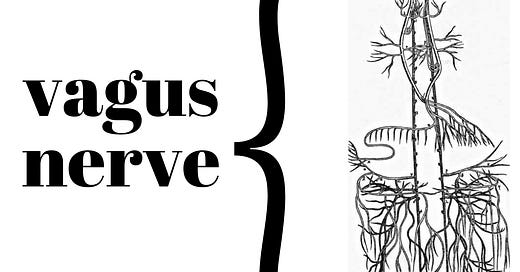#6 - Wandering Around Vagus - July 2023
Visualizing and feeling shapes & movements for Ventral, Sympathetic & Dorsal
Welcome to Month 6 of Wandering Around Vagus, a paid monthly subscription series exploring the Vagus Nerve + Polyvagal Theory.
I’m Tina Foster of Foster & Flourish, the creator and guide of Wandering Around Vagus.
First, a few quick notes to help you orient within our pages:
You can find last month’s post (our fifth) on dorsal vagal linked here.
Monthly & Supplementary Posts + Recordings and other topics can be accessed from the navigation bar atop the Wandering Around Vagus Homepage.
All past posts are always on the archive page.
Reminder! Our second group practice is this month!
July 15, 9am PT - mark your calendar
LINK TO JOIN PRACTICES VIA ZOOM
What we’ll do this month
This month, instead of introducing new material, we pause and reflect on some of what we’ve learned about the autonomic hierarchy and the three branches/responses/states of the vagus nerve that operate within that hierarchy.
We’ll begin with quick reviews of:
the vagus nerve
the autonomic hierarchy
and each of the three experiential states (ventral, sympathetic and dorsal)
Then we’ll explore how the three states might be expressed in the form of shape and movement based on feelings, memories, images, thoughts, etc we hold within each. The value of this exercise is that nonverbal expressions of embodied experiences are often more meaningful and effective than verbal expressions.
By the end of this 10 minute audio you’ll have a better sense of:
non-verbal ways of connecting to and representing the three autonomic states (ventral, sympathetic and dorsal).
how these shapes and movements can help identify which state you’re in at any given time.
how the three states compare and contrast with one another.
what it’s like to transition from one state to another.
how to use shape and movement to shift into a particular state you want to be in as well as shift out of a state you don’t want to experience.
Keep reading with a 7-day free trial
Subscribe to WANDERING AROUND VAGUS to keep reading this post and get 7 days of free access to the full post archives.



